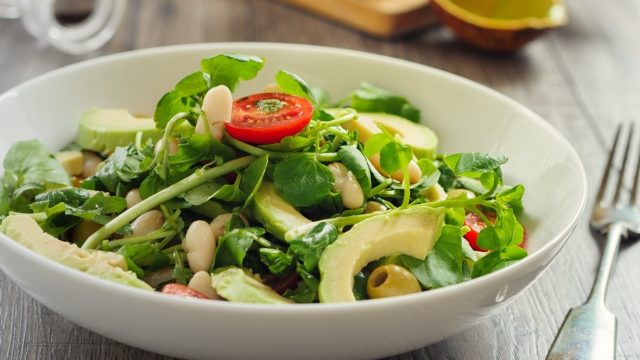This “Powerhouse” Vegetable Is the Healthiest, CDC Says—But You’re Probably Not Eating It

From a young age, we’re taught to prioritize fruits and vegetables to fulfill a well-balanced diet—but did you know that some are more nutritious than others? Leafy greens, yellow/orange citrus, and cruciferous veggies (like broccoli or kale) are known as “powerhouse” foods because their nutrients promote a healthy immune system and reduce the risk of chronic diseases, per the Centers for Disease Control and Prevention (CDC).
The CDC defines powerhouse fruits and vegetables as foods that “provide, on average, 10 percent or more daily value per 100 kcal of 17 qualifying nutrients.” These key nutrients include potassium, fiber, protein, calcium, iron, thiamin, folate, zinc, riboflavin, niacin, and vitamins A, B6, B12, C, D, E, and K. There are 41 fruits and vegetables that satisfy the CDC’s powerhouse criterion. Can you guess which powerhouse vegetable came out on top?
RELATED: Tomatoes Are the Healthiest Fruit in the World, CDC Says—Here’s Why.
Unless you’re an elite salad maker, watercress might not be a staple on your grocery list. The leafy green is often enjoyed as a tangy, crisp salad, but can also be added to soups, sandwiches, omelets, pastas, or sauteed with garlic as a side dish.
Watercress also has the highest concentration of vitamins, minerals, and other beneficial compounds of all powerhouse fruits and vegetables, according to the CDC. It received a perfect nutritional density score, beating out Chinese cabbage, chard, beet green, and spinach for the top spot on the leaderboard.
“Nutrient density is the ratio of nutrients in a food to the amount of energy—or calories—it provides,” New York-based dietician Rachel O’Connor, RD, explained to Food & Wine. “A nutrient density score is essentially a numeric value given to rate how nutritious certain foods are.”
Because some vegetables are higher in fiber, while others are richer in iron or potassium, it’s important that your weekly diet reflects a wide range of powerhouse foods. That said, dieticians say there’s no such thing as eating too much watercress.
“You could eat one cupful at a time. You could eat it more often or less often, too,” Dana Ellis Hunnes, PhD, a senior dietitian at UCLA Medical Center and assistant public health professor, told Food & Wine.
However, you will want to consider how you prepare watercress.
“Watercress, like other vegetables, loses some vitamin C and B vitamins when cooked,” said O’Connor. “Vitamin C is water-soluble and sensitive to heat, and it can leach out of vegetables when they are exposed to hot water. B vitamins are similarly heat-sensitive.”
In other words, you’re better off consuming watercress raw, whether that’s in the form of salads or as a garnish. You can always combine watercress with other powerhouse vegetables, too. “Even if it is the healthiest of all vegetables, it’s still better to eat a wide range of vegetables and fruits than to just stick with one,” added Hunnes. “That allows you to get a fuller complement of nutrients.”
RELATED: 10 Healthiest Superfoods to Add to Your Diet, Nutritionists Say.
Here’s a list of the top 10 powerhouse fruits and vegetables, along with their nutritional density scores, as ranked by the CDC.
- Watercress (100)
- Chinese cabbage (91.99)
- Chard (89.27)
- Beet green (87.08)
- Spinach (86.43)
- Chicory (73.36)
- Leaf lettuce (70.73)
- Parsley (65.59)
- Romaine lettuce (63.48)
- Collard green (62.49)